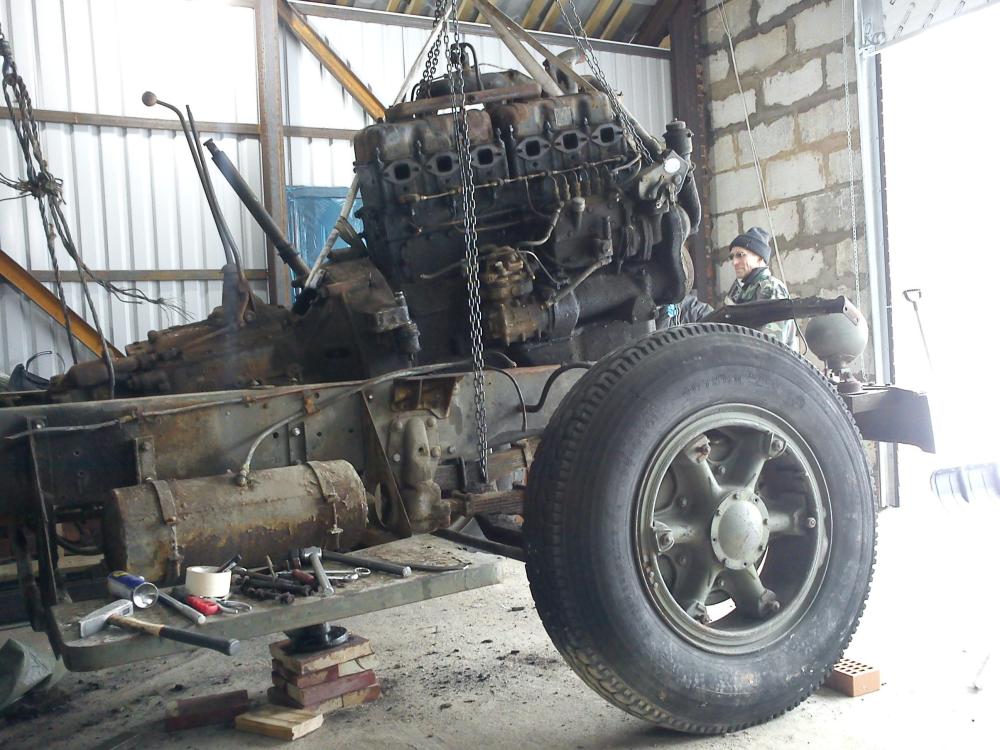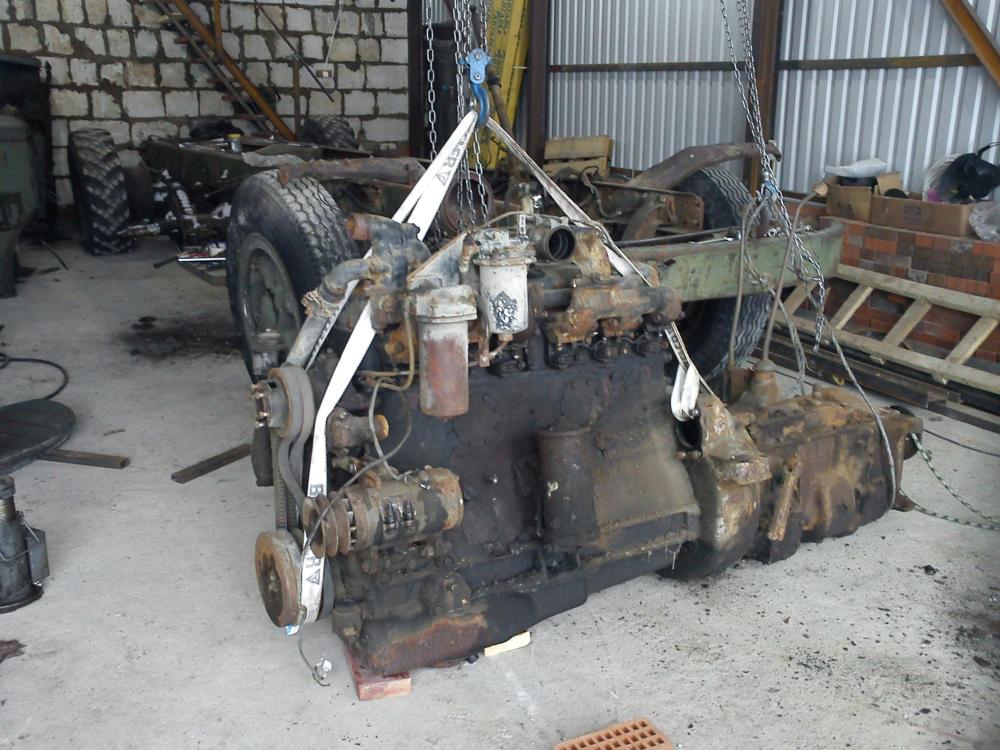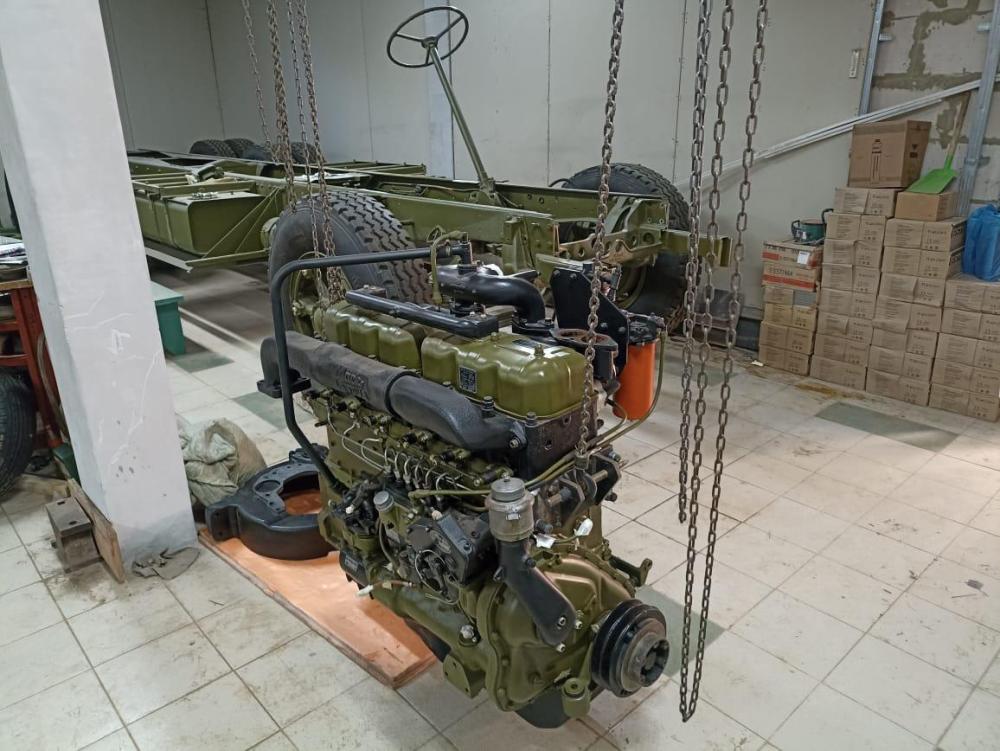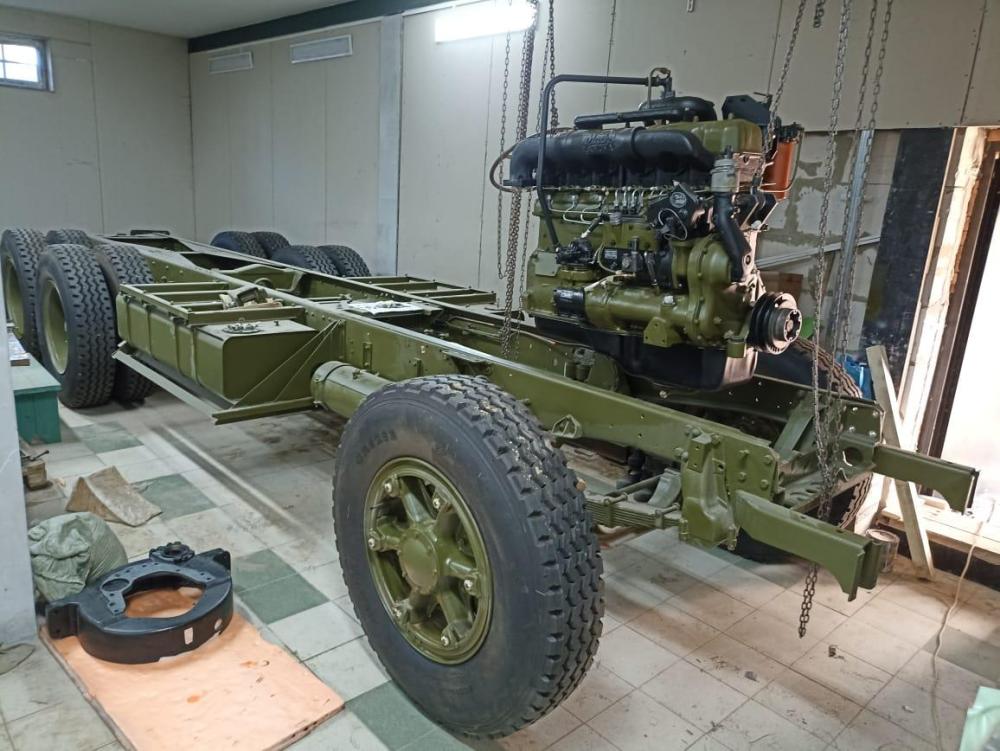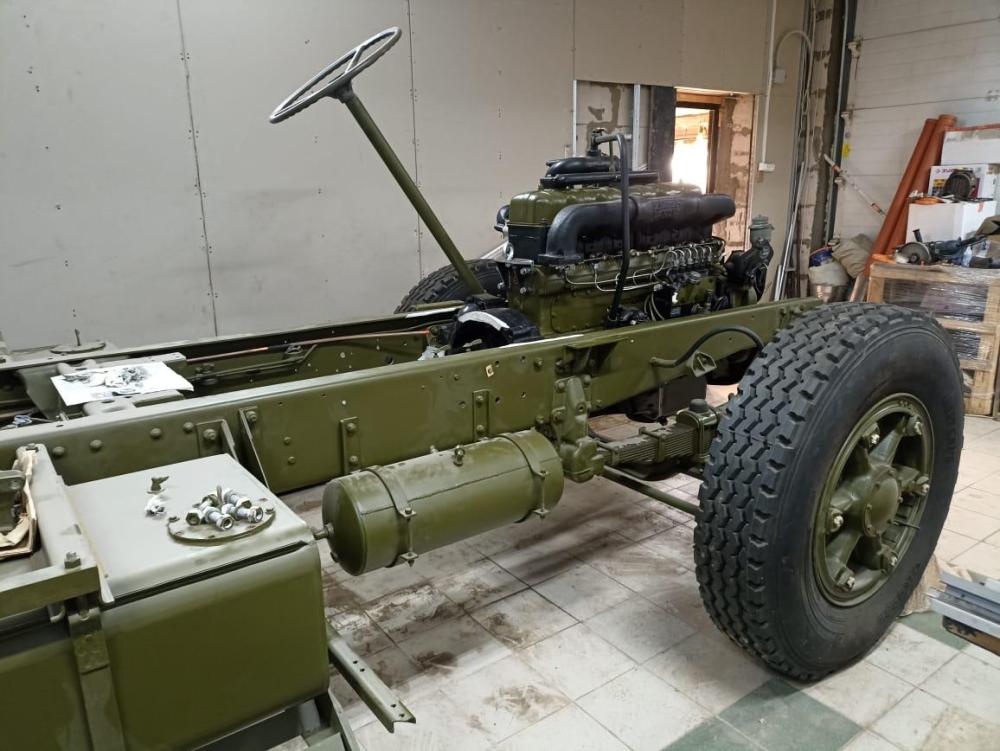-
Posts
7,972 -
Joined
-
Last visited
-
Days Won
78
Content Type
Profiles
Forums
Gallery
Events
Blogs
BMT Wiki
Collections
Store
Everything posted by Vladislav
-
That red truck on the pictures looks really nice and too probably will find a new owner if that's the plan. Of the value a few Bulldogs showed up for sale during the last 10 or so years I kept my attention to the subject. Complete units were priced in a range of 10-25K. But that's a very avarage figure and some more passed years could do correction to it also.
-
There are a few in Europe, mostly (or all?) former WW1 trucks supplied to France. One nice restored example is in Jisk Automobile Museum in Danrmark. Another one in about the original condition was stored in Normandy, France. But if I'm not wrong it got a go to another location. There also might be a few in GB.
-
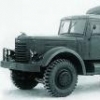
R model Dashboard Repair
Vladislav replied to jervn4's topic in Exterior, Cab, Accessories and Detailing
There were two kinds of those dash panels along the years. One style was plastic base with foam and vinil lamination, as described. The other one and the later one was solid plastic parts. ABS or so material. They were painted beige and gray metallic after a certain year. Those foam parts and solid parts seem interchangeable. And solid ones are much more steady and easy to fix (glue-fill-paint). I doubt there's a good way to fix foam conteining dash parts into or close to their original shape. There are laminating films with surface similar to automotive dash material (to repair or maybe even fabricate dashes?). But you doubtly could build up a layer of foam even enough to laminate it or glue up with anything. So on my mind two possible ways of fixing exist. Finding good used later style solid plastic parts and paint them over. Or bringing any style parts into upholstery shop to be furnished with leather or kunst leather. I personally took that second route. And those my dash parts are taking place at a upholstery guy for 4 or 5 years now. Along with a roll of covering material. Vlad -
Happy Birthday Mackey58!
-
Why not? We are hi-jacking the thread. Even I would make a serious offer of $1000. But too afraid the dog sledge routes are closed due to the sanctions.
-
Unfortunately I don't see any 'book pics. Only the one at the top of this post. I'm not a big specialist in early Mack V8's. But I think 325 and 375 have similar appearance. And 864 had stamped steel valve covers in compartion to 865/866 with cast alu ones. But it's possible there were option on those covers or mods during the production years I don't know. R-model frame rails (F600) have light decline toward the front end. F700 rails had steeper decline. But they're also belly-fished (or fish-bellied?) and have incline at the bottom side of the rail toward the front end. Presence of that torsion bar indicates it's F600. But I'm not 100% sure. Mike would say the truth. But he unfortunately wouldn't.
-
Maybe 866?
-
No. R700 chassis has similar config to R600 chassis but of higher section and of thicker sheet (3/8"). F700 chassis has different shape of the front portion, actually its own specific shape as long as I could observe along other Mack models. Maybe CF firetrucks had similar rails IDK. At the same time if I'm not wrong F700 had the same (light) section of the rails at the rear as R600 - 9" tall and 1/4" thick. That's standard section for basic B-models and a few other Macks of the era. Worth to point out we talk about Eastern R's and F's. Western R700 (RS/RL700) like your truck have straight rails with constant section front to rear. I don't have specs for those frames, would be interesting to learn the sizes. There were also FS/FL (700?) produced at Hayward factory. Which also had straight frame rails, the most probably similar to what was used in RS/RL700.
-

Marriage
Vladislav replied to Vladislav's topic in Antique and Classic Mack Trucks General Discussion
That's funny, definitely! -

Marriage
Vladislav replied to Vladislav's topic in Antique and Classic Mack Trucks General Discussion
Thanks Gentlemen! -
F600 were built using R-model chassis rails (or more correctly to say R-model got F600 chassis when came into production in 1965. F600 started in 1962) F700 have different and model specific rails. IDK why it's 700 since the rear portion rails section is identical (9x1/4") If I'm not wrong F700 were just later production trucks replacing F600 at some point. That shafty part you see between the bumper and the lower cab edge is a kind of torsion bar (or what else I don't know what particulary) makes me thinking it's F600.
-
Is that F700 for real not F600? Nice truck with steel dash. Thanks for sharing.
-

Marriage
Vladislav replied to Vladislav's topic in Antique and Classic Mack Trucks General Discussion
And sorry for my grammer mistakes in the past. It looks (from where I'm sitting) there's some improvement on this point after 12 more years on here. -

Marriage
Vladislav replied to Vladislav's topic in Antique and Classic Mack Trucks General Discussion
Paul, thanks for taking care of my content. I have been off the city for a couple of days and couldn't post. Honestly I surprized you kept in mind my resto adventures and could find the engine thread. The chassis tale is here: -

Marriage
Vladislav replied to Vladislav's topic in Antique and Classic Mack Trucks General Discussion
Yes, it is. It took me a while to find a correct engine in the past since my original chassis had a wrong one. Ended up importing a whole donor truck from Europe. With the engine stuck. -

Marriage
Vladislav replied to Vladislav's topic in Antique and Classic Mack Trucks General Discussion
Overall NR's were basically made as a L-model chassis. They seem closer to LF I guess having relatively light front axle, 44000 rears and single frame rails. But the wheels were used of 11.00-24 size with super single 14.00-20 rears on early production units. -

Marriage
Vladislav replied to Vladislav's topic in Antique and Classic Mack Trucks General Discussion
-

Marriage
Vladislav replied to Vladislav's topic in Antique and Classic Mack Trucks General Discussion
Thanks for the warm comments guys and blokes! As we know they're very motivating and are an essential need in proceed of these big projects. -

Marriage
Vladislav replied to Vladislav's topic in Antique and Classic Mack Trucks General Discussion
Seems like I should choose as "the most helpful answer" this your post as it's offered in the top of the page -
Put Lanova engine into the NR chassis of Friday. The chassis was completed 12 years ago and the engine first started 8 years ago. The 2nd story was untold due to shortage of time. Now the things look more promising than before but still damn amount of tinkering ahead.
- 46 replies
-
- 13
-

-

-

The FWD doing FWD things and other misc. stuff
Vladislav replied to 1958 F.W.D.'s topic in Odds and Ends
Ok, cheers on me -

FREEDOM SUPERLINER
Vladislav replied to 1961H67's topic in Antique and Classic Mack Trucks General Discussion
I think all Macks of that year had firewall and door openings (the whole cab inside) painted graphite metallic. So that's not a Freedom feature. For the frame my way would be ordering a pair of new straight steel rails from PG Adams or so of similar section as the alu ones are, slide them in place of the bad ones and reattach all the chassis parts back on. Probably a big job but you get very close to original config in the end. The rails may be ordered pre-drilled for a few more coins (about 70% extra to the cost though) but that is notably time consuming along the job. I like the look of the truck in this current color very much. But no doubt bringing its appearance back to that limited series butch is a must to do along a possible resto deal. And if I'm not wrong Rene, the Nederland guy had a few sets of Freedom decals fabricated in the past. He used to be a member on here (Mack boy?) so checking out may be an efforts saving point too. -

The FWD doing FWD things and other misc. stuff
Vladislav replied to 1958 F.W.D.'s topic in Odds and Ends
So... Did you allow her to steer the FWD in a parking lot???!!! The Hahn would be another story, but FWD!!!... And those 99 Cents mentioned above also smell related. -
Don't you need the heater unit to be re-arranged? It's under the passenger seat in the stock configuration.
BigMackTrucks.com
BigMackTrucks.com is a support forum for antique, classic and modern Mack Trucks! The forum is owned and maintained by Watt's Truck Center, Inc. an independent, full service Mack dealer. The forums are not affiliated with Mack Trucks, Inc.
Our Vendors and Advertisers
Thank you for your support!





